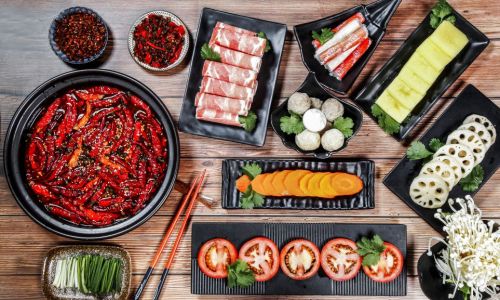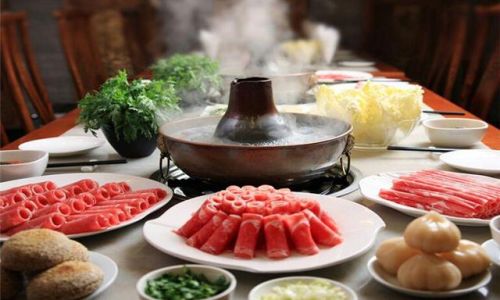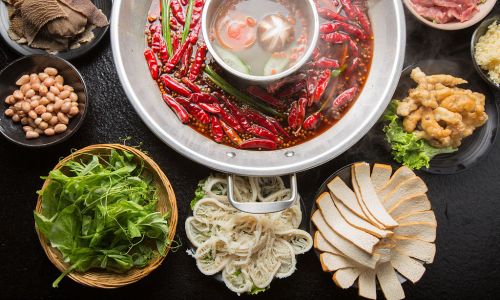Hot pot, a beloved communal dining experience originating from East Asia, has transcended borders to become a global culinary sensation. At its core, hot pot is about gathering around a simmering pot of broth, cooking an array of fresh ingredients at the table, and dipping them into flavorful sauces. The beauty of hot pot lies in its versatility—it can be tailored to suit any palate, dietary preference, or occasion. To host the perfect hot pot gathering, careful selection of ingredients is key. This comprehensive guide explores the essential components, from broths to beverages, ensuring your hot pot feast is a resounding success.

Broth Bases: The Soul of the Hot Pot
The broth sets the tone for the entire meal, infusing ingredients with its aromatic essence. While pre-made broths are convenient, homemade versions allow for customization. Here are some classic and creative options:
- Spicy Mala Broth: A Sichuan specialty, this broth combines chili oil, Sichuan peppercorns, garlic, and ginger. It delivers a numbing, tingling sensation that spice enthusiasts adore.
- Herbal Tonkotsu: Common in Cantonese hot pot, this broth uses chicken or pork bones simmered with goji berries, jujube dates, and ginseng for a nourishing, slightly sweet flavor.
- Tom Yum Broth: For a Thai twist, blend lemongrass, galangal, lime leaves, chili, and lime juice for a tangy, aromatic base.
- Vegetarian Miso: A Japanese-inspired broth made with white miso, kombu (kelp), and shiitake mushrooms, perfect for plant-based diets.
- Kimchi Broth: A Korean fusion option, fermented kimchi, gochujaru (chili flakes), and garlic create a fiery, probiotic-rich base.
Pro Tip: Offer a split pot with two broths to cater to diverse tastes.
Proteins: The Stars of the Show
Proteins form the heart of any hot pot. Opt for a variety to keep the meal dynamic:
-
Meats:
- Beef: Thinly sliced ribeye, sirloin, or brisket cook quickly. Marinate in soy sauce, sesame oil, and garlic for added depth.
- Lamb: Shoulder or leg cuts, often paired with cumin or coriander in Chinese-style hot pot.
- Pork: Belly slices or tenderloin, ideal for absorbing rich broths.
-
Seafood:
- Shrimp: Fresh or frozen, deveined for convenience.
- Squid: Tubes or rings, sliced into rings for even cooking.
- Fish: Mild white fish like cod or halibut, or salmon for richness.
- Mussels and Clams: Add a briny flavor to the broth as they open.
-
Alternative Proteins:
- Tofu: Firm tofu holds its shape, while silken tofu adds creaminess.
- Seitan: Wheat gluten slices absorb broth flavors beautifully.
- Quail Eggs: Pre-boiled and peeled for easy dipping.
Quantity Guide: Aim for 1/4–1/3 pound of meat per person, adjusted for appetites.
Vegetables: Freshness and Texture
A balanced hot pot includes a rainbow of vegetables, offering crunch, sweetness, and earthiness:
-
Leafy Greens:
- Napa cabbage, spinach, and bok choy wilt quickly in the broth.
- Watercress adds a peppery kick.
-
Cruciferous Vegetables:
- Broccoli and cauliflower florets, blanched briefly to soften.
- Chinese broccoli (gai lan) for a bitter-sweet note.
-
Root Vegetables:
- Daikon radish, carrots, and potatoes, sliced thinly to cook faster.
- Taro root, a starchy favorite in Southeast Asian hot pots.
-
Mushrooms:
- Enoki, shiitake, and oyster mushrooms contribute umami.
- Wood ear mushrooms add a chewy texture.
-
Other Essentials:
- Lotus root, sliced and soaked to prevent browning.
- Bamboo shoots, canned or fresh, for a crisp bite.
Preparation Tip: Wash and chop vegetables ahead of time; store in airtight containers to maintain freshness.

Carbohydrates: The Filling Finish
No hot pot is complete without carbs to soak up the broth:
-
Noodles:
- Udon, rice noodles, or glass noodles (cellophane/mung bean threads).
- Instant noodles for a nostalgic touch.
-
Dumplings and Wontons:
- Store-bought or homemade, filled with pork, shrimp, or vegetables.
- Add them toward the end of the meal to avoid overcooking.
-
Rice Cakes:
Korean tteok (cylindrical rice cakes) or Japanese mochi for a chewy contrast.
-
Bread:
For non-traditional twists, serve garlic bread or pita for dipping.
Dipping Sauces and Condiments: Elevating Flavors
The right sauce can transform a simple ingredient into a culinary masterpiece. Offer a DIY sauce bar with:
-
Classic Combinations:
- Sesame-Soy: Tahini, soy sauce, rice vinegar, and scallions.
- Spicy Chili Oil: Lao gan ma chili crisp, garlic, and cilantro.
- Peanut Sauce: Crushed peanuts, hoisin, and lime.
-
Regional Inspirations:
- Sha Cha Sauce: A Taiwanese barbecue sauce with seafood and soybean paste.
- Yum Yum Sauce: Japanese mayo, ketchup, and paprika for a creamy option.
-
Fresh Garnishes:
- Chopped cilantro, Thai basil, minced garlic, and pickled ginger.
- Fried shallots or crushed peanuts for crunch.
Beverages and Pairings: Balancing the Heat
Quench the heat and cleanse the palate with strategic drinks:
-
Non-Alcoholic:
- Chrysanthemum tea or barley tea for a floral, cooling effect.
- Coconut water or fresh fruit juices like lychee or plum.
-
Alcoholic:

- Light beers like lagers or wheat beers complement spicy broths.
- Sake or plum wine (umeshu) for a Japanese-style pairing.
- Sparkling wine or cider to cut through richness.
-
Pairing Tips:
- Match spicy broths with sweet drinks (e.g., mango juice).
- Serve herbal broths with green tea to enhance earthy notes.
Regional Variations: A World of Hot Pot
Explore global interpretations to diversify your menu:
-
Chinese Styles:
- Sichuan: Numbing peppercorns and chili oil.
- Beijing: Instant-boiled mutton with sesame sauce.
- Hainan: Coconut milk broth with seafood.
-
Japanese Shabu-Shabu:
Thinly sliced beef, tofu, and udon in a kombu-based broth.
-
Korean Jeongol:
Spicy stew with kimchi, noodles, and assorted meats.
-
Thai Sukiyaki:
Sweet soy broth with glass noodles and seafood.
Preparation Tips: Efficiency and Safety
- Thawing Meats: Defrost proteins in the refrigerator 24 hours prior.
- Slicing Techniques: Freeze meats slightly for easier thin slicing.
- Separate Plates: Use color-coded plates for raw and cooked ingredients.
- Broth Prep: Simmer broth 1–2 hours ahead; adjust seasoning before serving.
Setting Up the Hot Pot Station
- Equipment: Invest in a portable induction cooker or electric hot pot.
- Layout: Arrange ingredients buffet-style with labels for easy access.
- Safety: Place the pot on a stable surface, away from flammable items.
Etiquette and Enjoyment
- Cooking Order: Start with meats, then seafood, followed by vegetables and carbs.
- Sharing: Use communal chopsticks or tongs to avoid cross-contamination.
- Conversation: Encourage guests to share stories while waiting for ingredients to cook.
Conclusion: The Joy of Hot Pot
Hot pot is more than a meal—it’s a celebration of togetherness, adaptability, and flavor. By curating a diverse spread of broths, proteins, vegetables, and sauces, you create an experience that delights the senses and fosters connection. Whether you prefer the fiery kick of Sichuan mala or the soothing comfort of herbal tonkotsu, the perfect hot pot awaits your creativity. So gather your loved ones, fire up the pot, and let the simmering broth weave memories that linger long after the last bite.
Word Count: 1,950+ words. This guide ensures a comprehensive, engaging read while adhering to the specified requirements.






0 comments